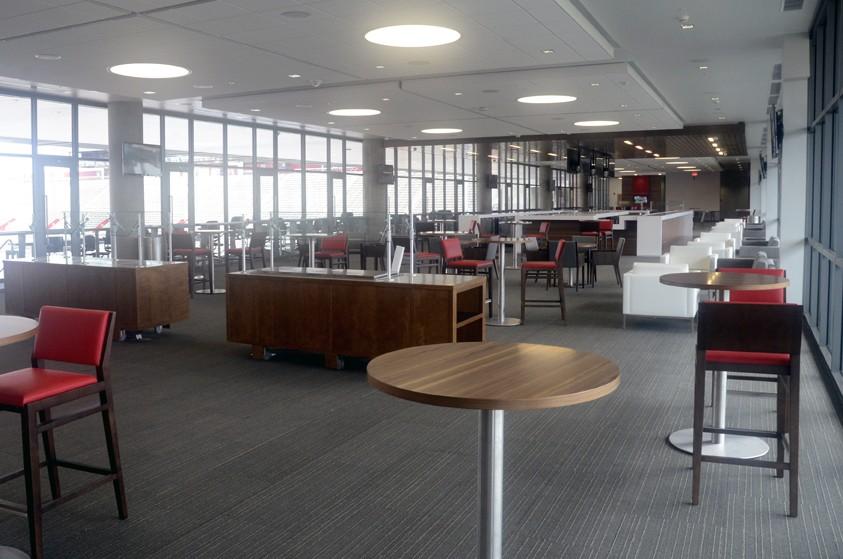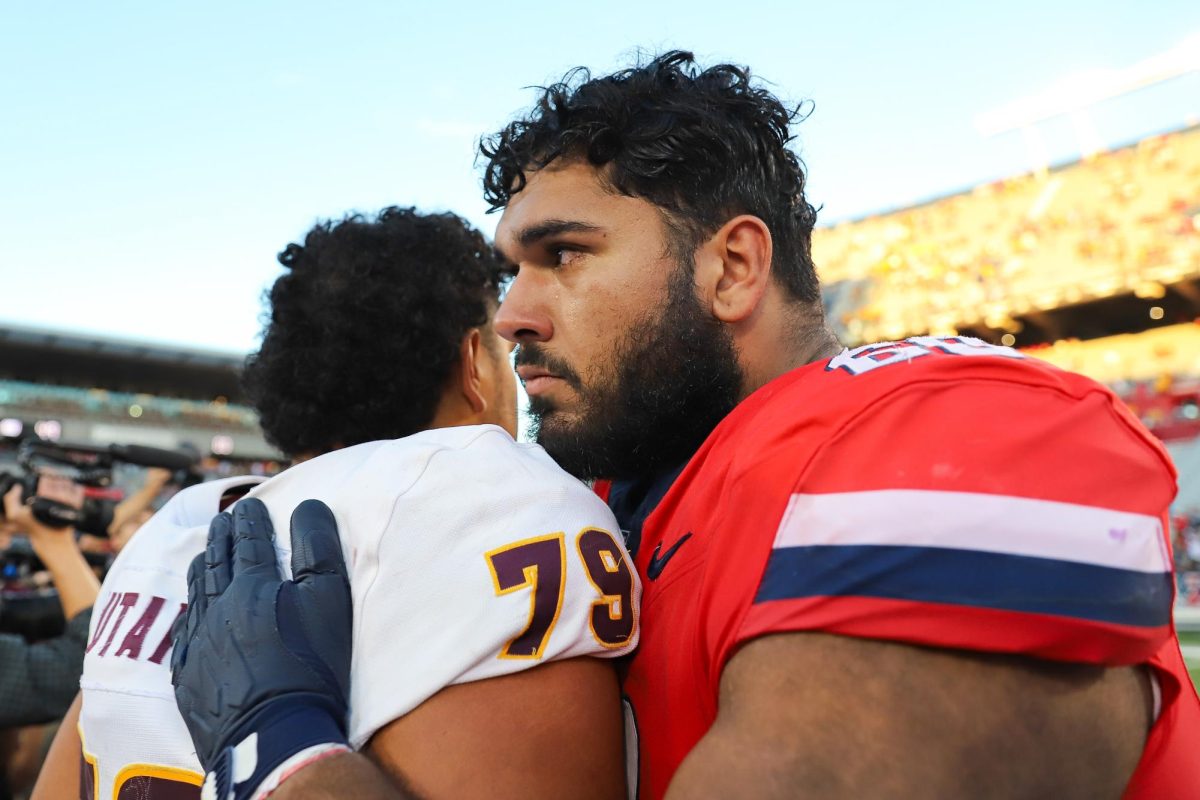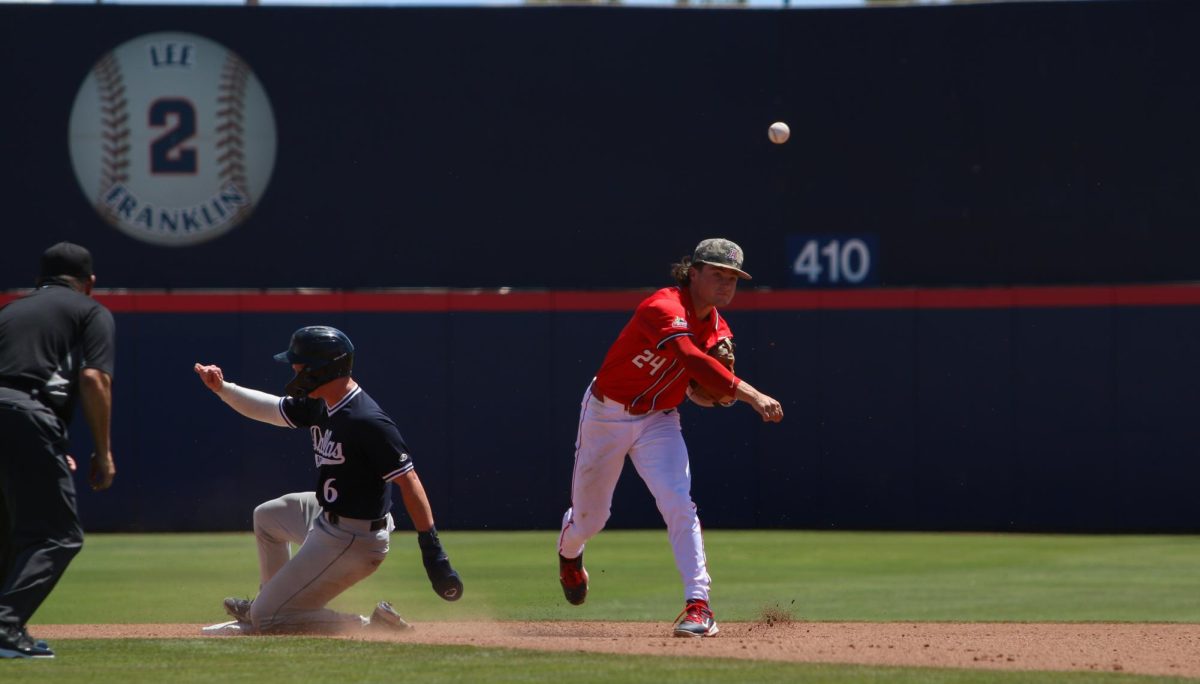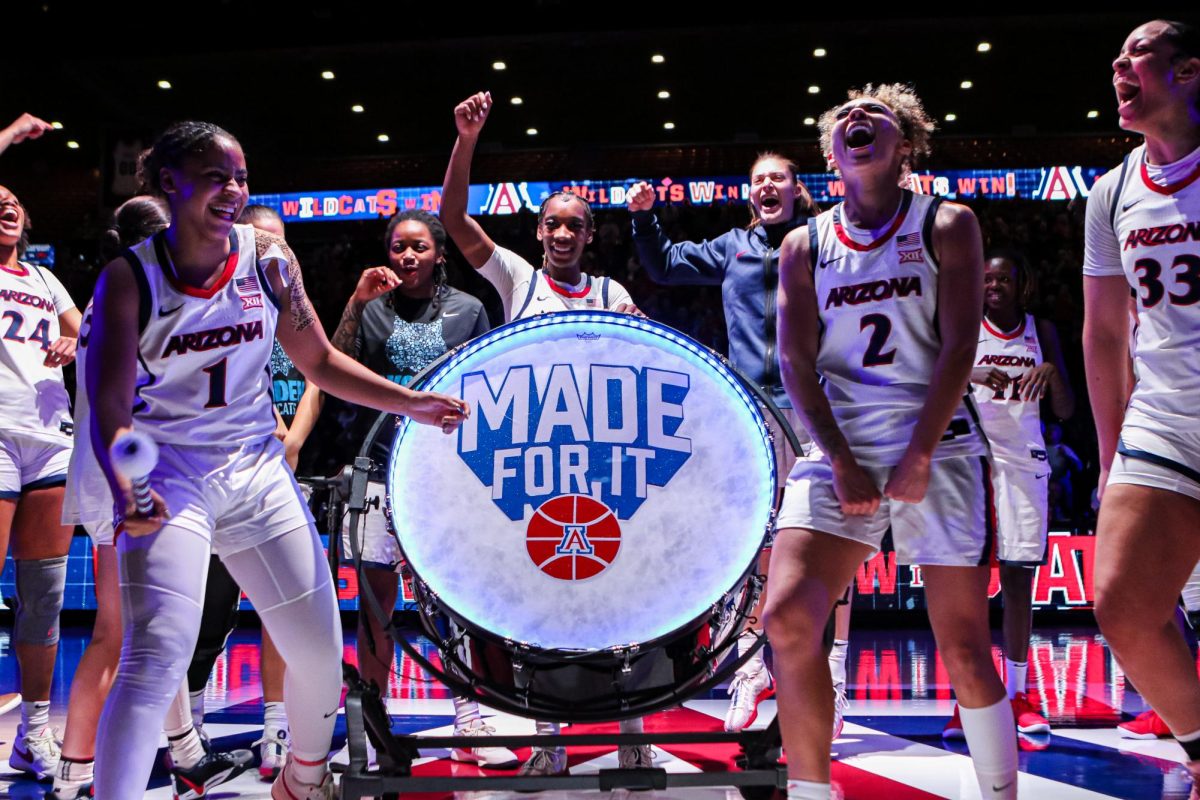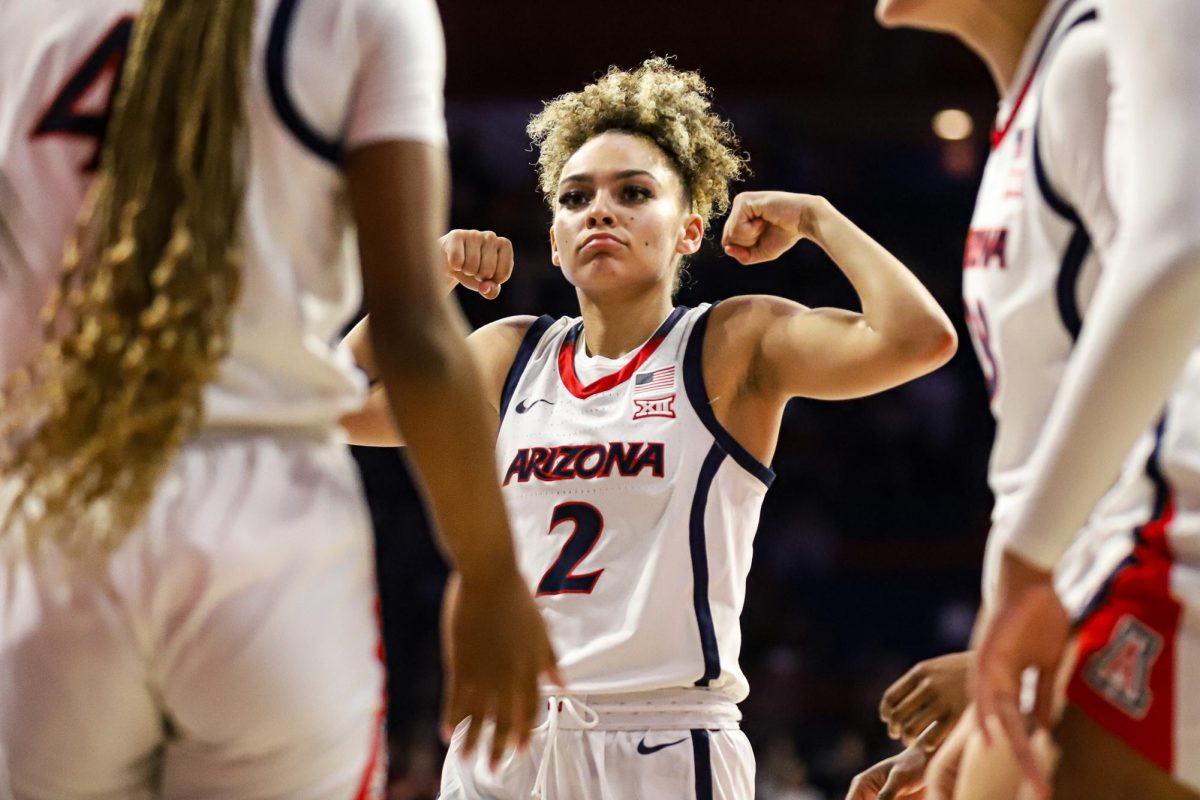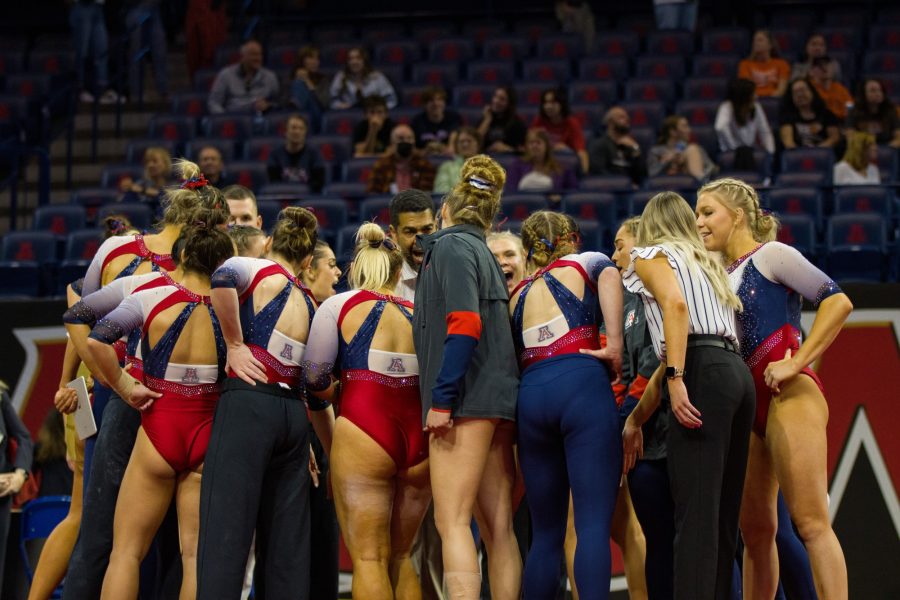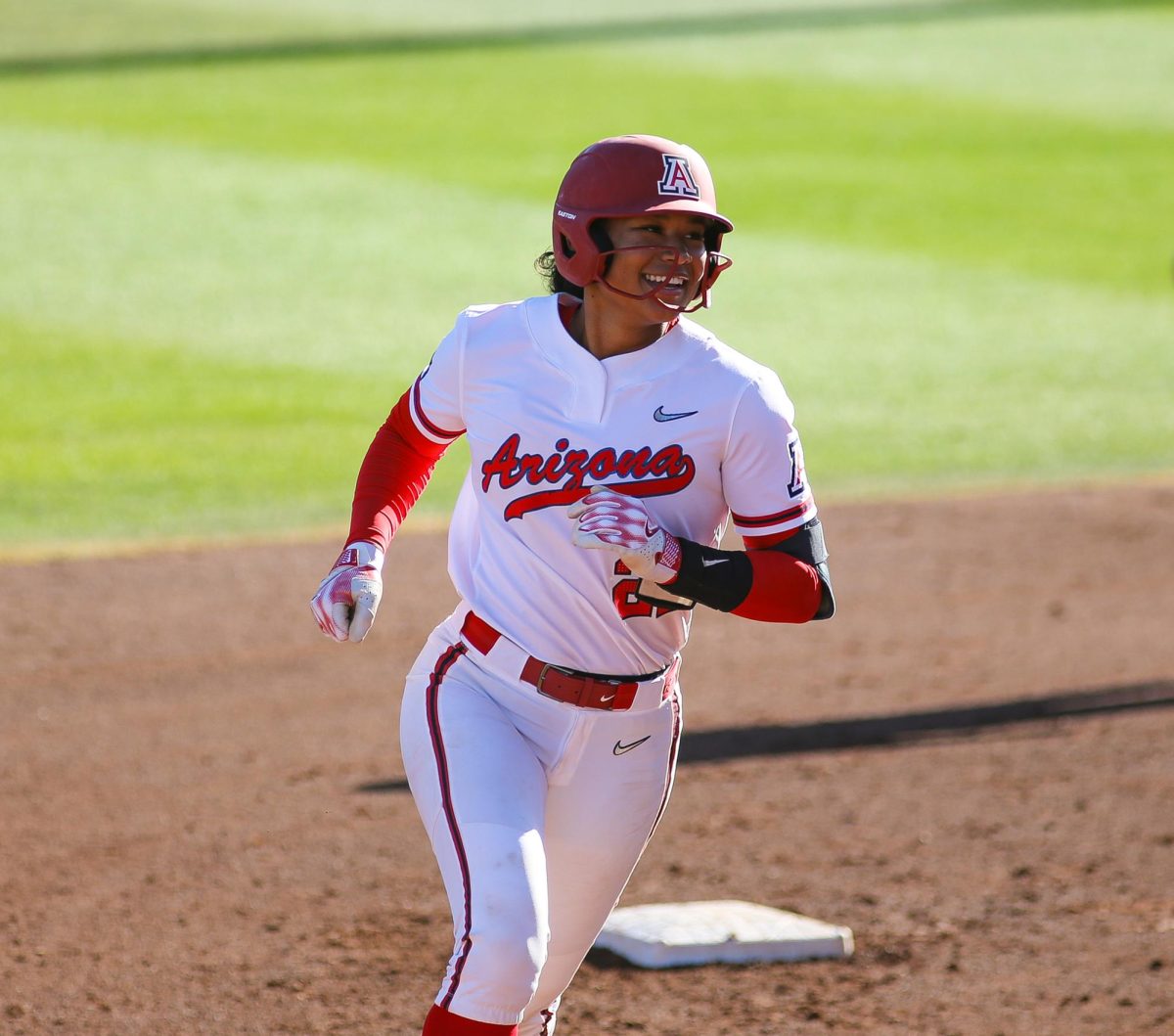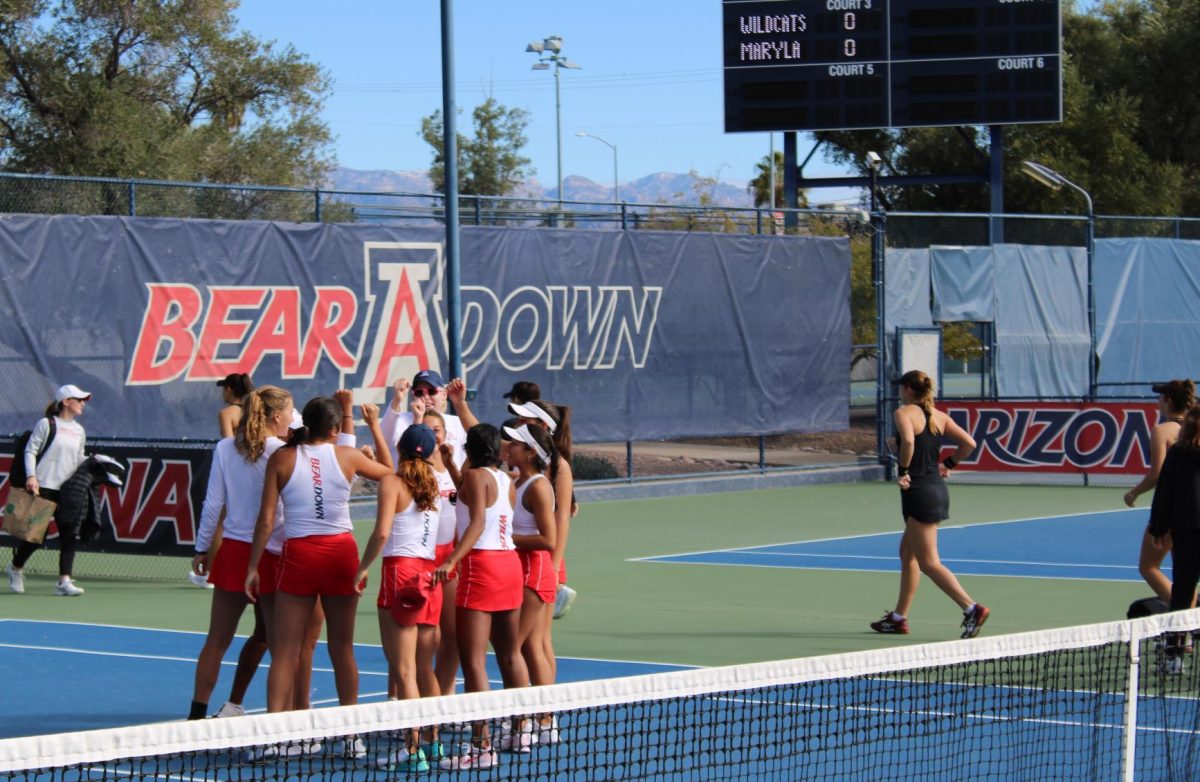Arizona Stadium’s new Lowell-Stevens Football Facility represents the future for Arizona football.
The $72.3 million addition provides a new home for the Wildcats and is expected to be a game changer when it comes to recruitment, maximizing revenue and fan amenities as the program looks to gain prominence as a top-tier BCS team.
The new weight room, locker room, medical treatment center, equipment room, meeting rooms and coaches’ offices allow the football program to relocate from its old home in McKale Center, which Athletic Director Greg Byrne said he believes provides a positive effect. Despite the project’s high cost, Byrne said he feels confident that it is a step in the right direction.
“The impact it has on our football program is [and will continue to be] significant,” Byrne said. “We were probably the last BCS-level program that had their football operation in their basketball arena. Most moved out 20 years ago, so we were a little behind the times.”
In addition to the new facility, another major renovation involved installing FieldTurf Revolution CoolPlay to replace the grass, which provides a training surface that looks appealing to recruits and holds up under rain and extreme heat. Additional fan amenities include updated restrooms, concessions, concourses and improved cell service.
The north end zone projectd was funded mainly by charitable gifts and private donations. Fourty years ago, McKale Center was constructed for $8.145 million and paid for by the state.
“The Wildcat Club is the fundraising arm of our athletics department,” said Scott Shake, senior associate athletic director of development. “We utilize multiple revenue streams from tickets, marketing, sponsorships, TV, radio, media rights and charitable giving [to finance Arizona Athletics].”
The Wildcat Club was looked at to provide a fundraising network for major gifts and worked in coordination with The University of Arizona Foundation to find donations for the new facility.
“There were a lot of families that gave to the project to make it a reality,” Byrne said. “We focused on people who were passionate about the University of Arizona, our athletic department and our football program.”
About half of the project was financed by five major donations from Jeff and Sharon Stevens ($12 million), David and Edith Lowell ($11 million), Peter and Nancy Salter ($2.5 million), Louis “Buzz” Sands IV ($10 million) and Jim and Vicki Click ($2.5 million), while the other half was made up of more than 100 smaller donations along with numerous anonymous donations.
“We try to get a few of those six and seven figure gifts as naming rights on different spaces, and then we work with the development staff in identifying other areas that would have naming rights attached to it in order to maximize revenue,” said Suzy Mason, associate athletic director of events.
In addition to private donations and charitable gifts, Arizona Athletics also sells sponsorships, signage and promotions to large corporate companies inside the stadium. An average corporate sponsorship deal lasts for three to five years and provides Arizona with monetary funds while ensuring the sponsor recognition either through signage or alternative multimedia for the duration of the contract.
On an average year, the athletic department sells upward of $6 million of commercial sponsorships within the stadium, which contributes in providing revenue to support not only football, but all sports at the UA.
“We have 20 sports teams, and only two make more money than they spend,” Shake said. “So we rely on revenue from football and men’s basketball to support everything. They are the ones that generate the income for swimming, golf, track and field and softball.”
Since 2004, Arizona Athletics has partnered with IMG College to sell these corporate sponsorships, signage and multimedia agreements in order to increase the production of the department’s revenue streams.
“We have a long partnership, contract and license agreement with IMG to handle our sports marketing rights, which include corporate sponsorships, advertising, media rights and signage,” said James Francis, senior associate athletic director of external operations. “The relationship has been really good because it allows us to get a guaranteed annual income and then permits IMG to go out and sell [to major corporations]. They have been able to increase the number of people who are out there on our behalf trying to increase our revenue, which has been extremely beneficial.”
-Follow him on twitter @EvanRosenfeld17



